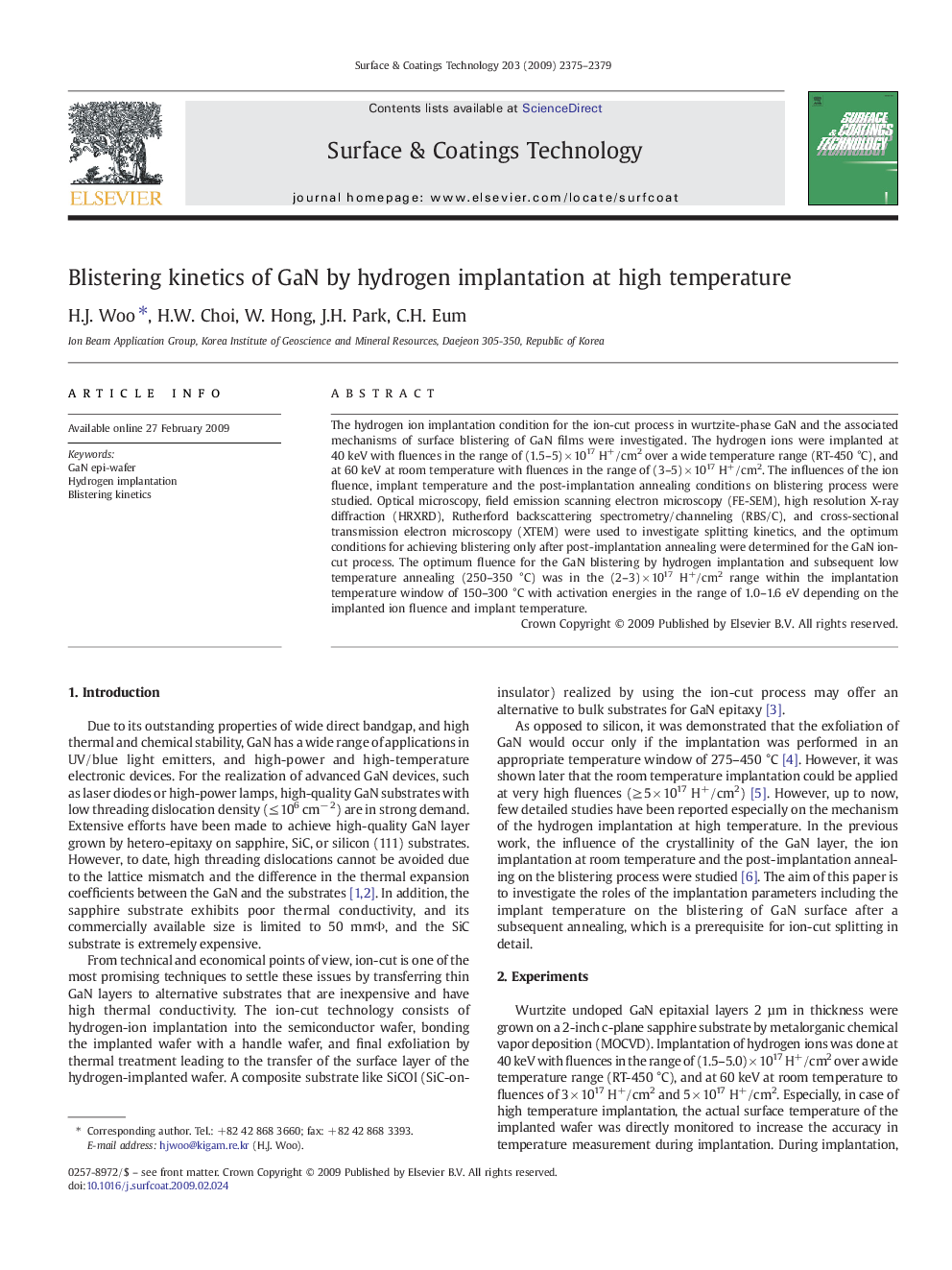| Article ID | Journal | Published Year | Pages | File Type |
|---|---|---|---|---|
| 1660134 | Surface and Coatings Technology | 2009 | 5 Pages |
The hydrogen ion implantation condition for the ion-cut process in wurtzite-phase GaN and the associated mechanisms of surface blistering of GaN films were investigated. The hydrogen ions were implanted at 40 keV with fluences in the range of (1.5–5) × 1017 H+/cm2 over a wide temperature range (RT-450 °C), and at 60 keV at room temperature with fluences in the range of (3–5) × 1017 H+/cm2. The influences of the ion fluence, implant temperature and the post-implantation annealing conditions on blistering process were studied. Optical microscopy, field emission scanning electron microscopy (FE-SEM), high resolution X-ray diffraction (HRXRD), Rutherford backscattering spectrometry/channeling (RBS/C), and cross-sectional transmission electron microscopy (XTEM) were used to investigate splitting kinetics, and the optimum conditions for achieving blistering only after post-implantation annealing were determined for the GaN ion-cut process. The optimum fluence for the GaN blistering by hydrogen implantation and subsequent low temperature annealing (250–350 °C) was in the (2–3) × 1017 H+/cm2 range within the implantation temperature window of 150–300 °C with activation energies in the range of 1.0–1.6 eV depending on the implanted ion fluence and implant temperature.
